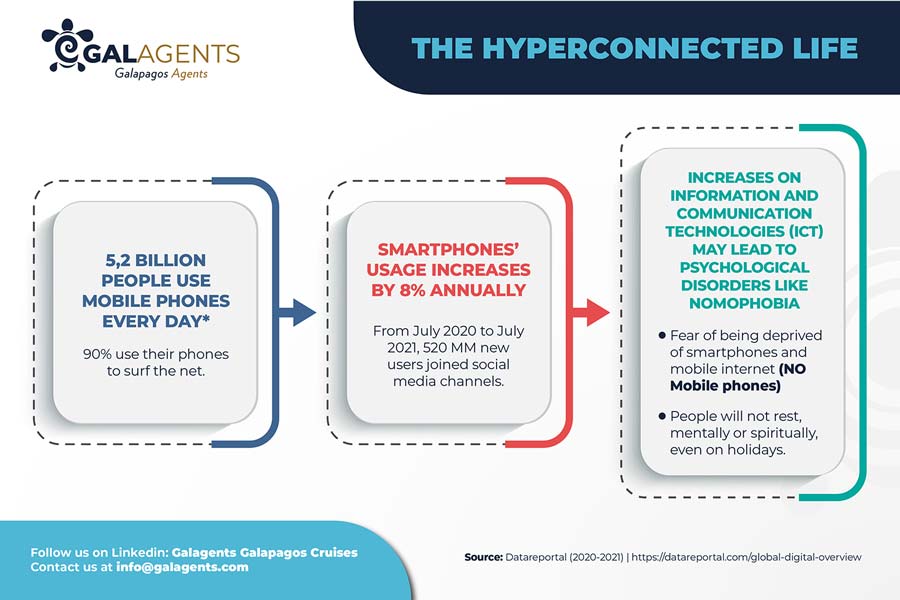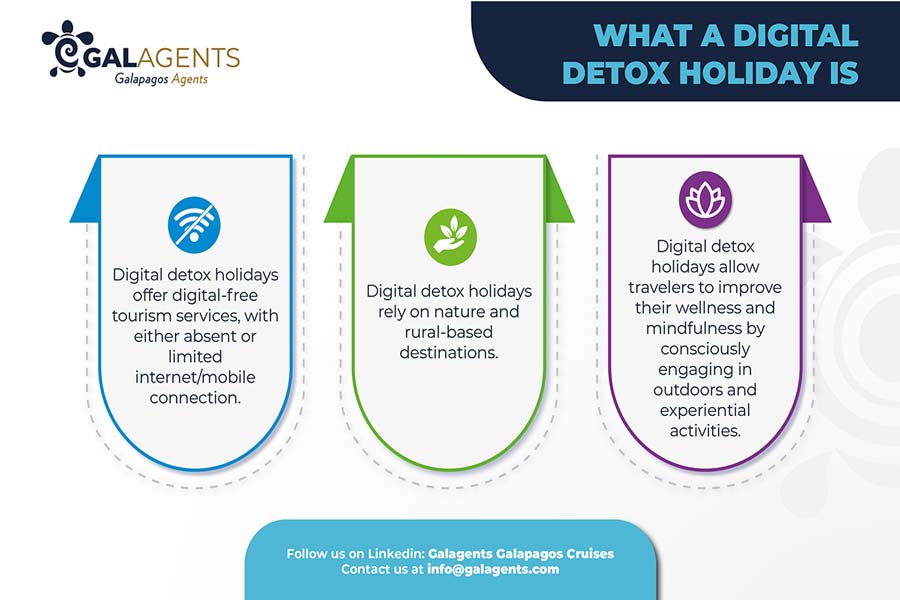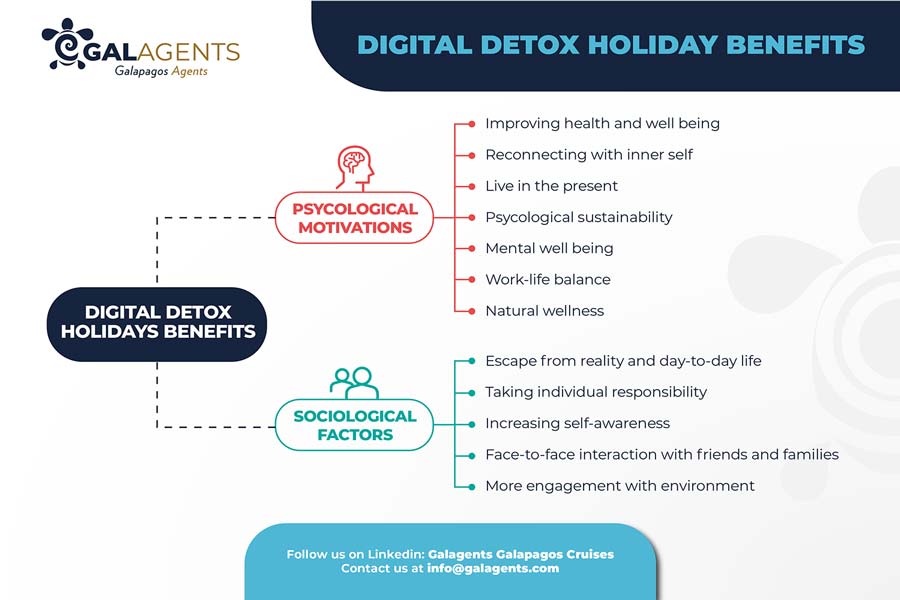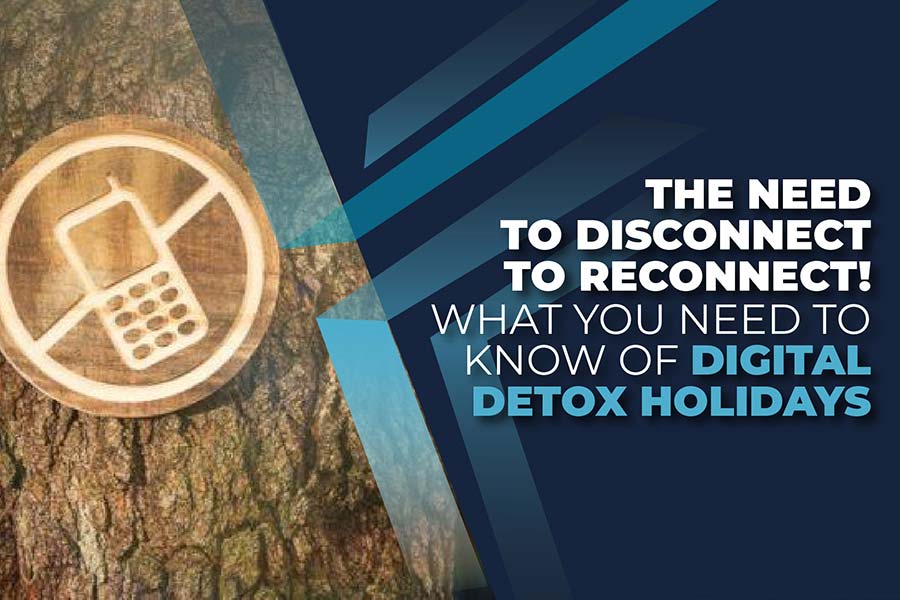After living an extended period of lockdowns at home, we realized how essential nature and traveling are for our lives. Even though we discovered how vital Information and Communication Technologies (ICT) are for us nowadays, we live in a period of over-connectedness, and sometimes we cannot rest from it.
Therefore, more people are looking for options to detoxify from the tech world. This article will discuss some concepts and facts to understand the rising trend of Digital Detox Holidays so that you can develop new businesses and products based on it.
Hyperconnected life
We’ve been digitally evolving over the last decades. However, 2020 set a breaking point for digital connections in the world. The impossibility to leave our homes and meet our beloved ones or socialize with others forced humanity to adopt digital communications.
5,2 billion people use mobile phones every day (Datareport, 2020), and 90% use them to surf the net. Thus, the usage of smartphones increases by 8% annually. For instance, from July 2020 to July 2021, 520 MM new users joined social media.
Nonetheless, the overuse of ICT is associated with several issues, such as techno-stress, anxiety, and sleeping disorders, among many others. Therefore, there is a new psychological disorder related to over-digital connection called nomophobia, which is the fear of being deprived of smartphones and mobile internet.

5,2 billion people use mobile phones every day (Datareport, 2020), and 90% use them to surf the net.
Digital Detox
As a result of the hyper-digital connection, a new concept developed. Digital detox is based on the idea of balance, similar to mindfulness, and is seen as a tool for taking short breaks to relieve stress and learn about self-regulation (Glomb et al., 2011).
According to Oxford Dictionary (2013), Digital Detox is “a period during which a person refrains from using electronic devices such as smartphones or computers, regarded as an opportunity to reduce stress or focus on social interaction in the physical world.”
The concept got popular after COVID-19 because people spent more hours on digital devices and were socially isolated. Consequently, people were pledging for a proper resting time and looking to reconnect with “life” in a meaningful way. In which case, traveling has become a perfect tool for those looking to live life to its fullest.
Digital Detox Holidays (DDH)
As a result of this trendy concept, the travel industry has been developing travel products to satisfy the need of people to disconnect to reconnect. Thus, Digital Detox Holidays (DDH) were born!
What digital detox holidays represent for the travel industry in a pandemic era is a releasing bulb for many people overwhelmed due to being digitally hyperconnected. DDH help people focus on experiencing the real world while traveling by visiting destinations with either absent or limited internet and mobile connections that can be cataloged as technology dead zones, offering digital-free tourism (DFT) services.
What do DFT services mean?
We can define DFT as nature and rural-based destinations with a series of services focused on offering retreat, wellness, and mindfulness to everyone looking to get away from ICT due to social, physical, or mental effects. DFTs allow travelers to voluntarily and consciously engage in places’ outdoor, experiential, well-being, and health activities.

DFT as nature and rural-based destinations with a series of services focused on offering retreat.
Types of Digital Detox Holidays
But, tour operators and travel designers can develop many types of Digital Detox Holidays to fulfill travelers’ needs. The first one is self-responsible packages, in which travelers can decide whether to digitally disconnect or not during the trip. The key factor in this option is offering them accurate activities that invite travelers to digital-disconnect, even though they can decide not to do so.
The second type is designing digital detox packages to device-free destinations and businesses that can provide ICT connectivity in specific sites. For example, if a traveler wants to have a phone/video call with their family at home, they can do it if they go to a specific location. Hence, the connectivity option can be limited, but people won’t be digitally isolated, and the anxiety that travelers may feel for being totally disconnected is considerably less.
The final option is offering travel packages to digital dead zone destinations with very limited ICT connections or the lack of it. This option is ideal for those travelers that want to be embedded by nature, reflecting activities, and self-connection options like retreat trips. For example, boarding a Galapagos cruise in a small exclusive yacht will give the traveler a time frame of 6 days on average of pure nature, wildlife, and outdoor activities with the opportunity to socialize with a small group of cruise mates.

Tour operators and travel designers can develop many types of Digital Detox Holidays to fulfill travelers’ needs.
Digital Detox Holidays Benefits
Based on those facts, Digital Detox Holidays offer a series of benefits, either psychologically and sociologically.
Regarding psychological benefits, DDH travelers can experience improved health and well-being, helping them reconnect with their inner self by living the present and getting a work-life balance.
In terms of the sociological impact of Digital Detox Holidays, one of the more tangible effects is that it helps people to have face-to-face interaction with families and friends, especially after the COVID’s isolation. It also allows travelers to be more engaged with the environment and escape from reality and day-to-day life.
As a result, we can use these facts as emotional triggers and benefits to develop a marketing campaign to promote digital detox holidays that can help people disconnect to reconnect with life in a period of hyper-digital connection, techno-stress, and anxiety.

Digital Detox Holidays offer a series of benefits, either psychologically and sociologically.
Don’t miss reading the following articles:
4 Reasons non-consumptive tourism can help to rebound the travel industry
Discover the top 5 National Parks in South America, out of 20, to travel in 2021
5 facts why Galapagos is the top destination to travel in the pandemic era

